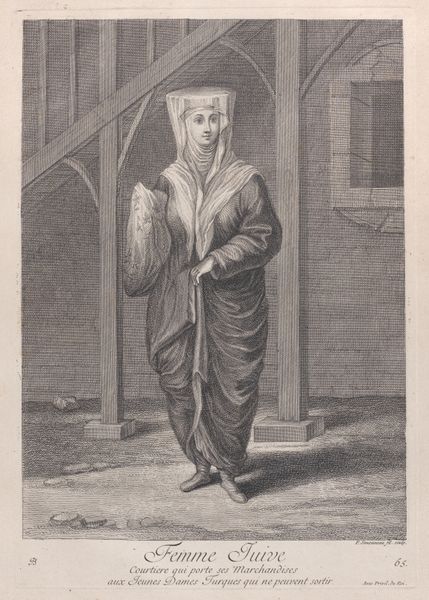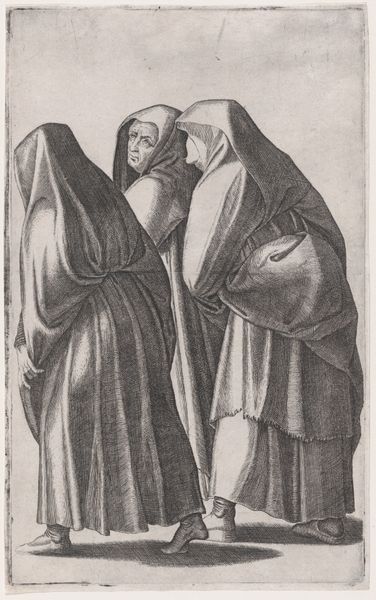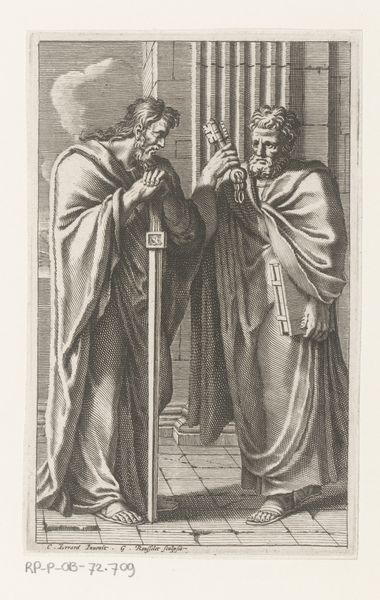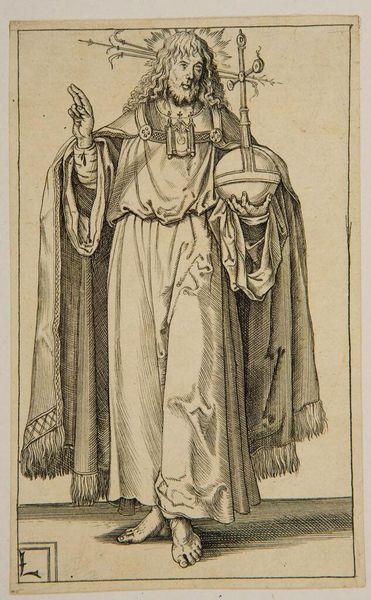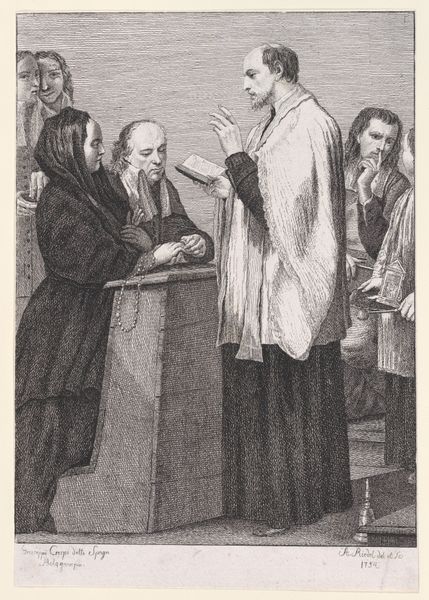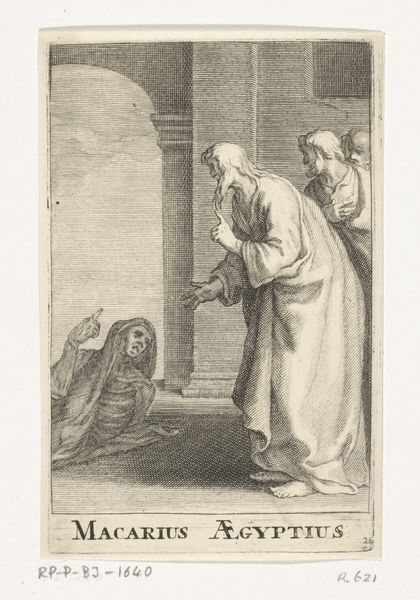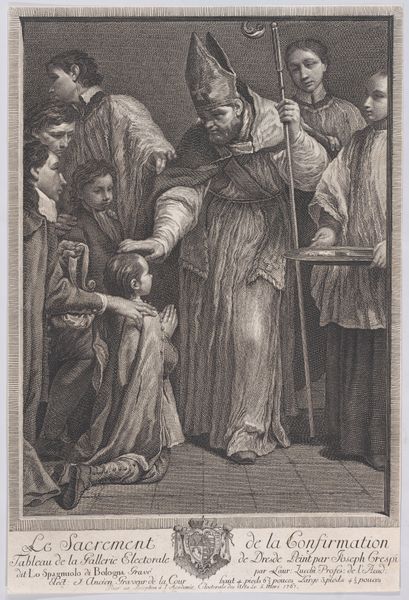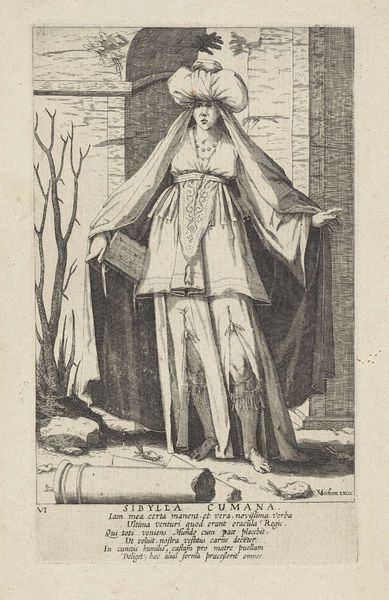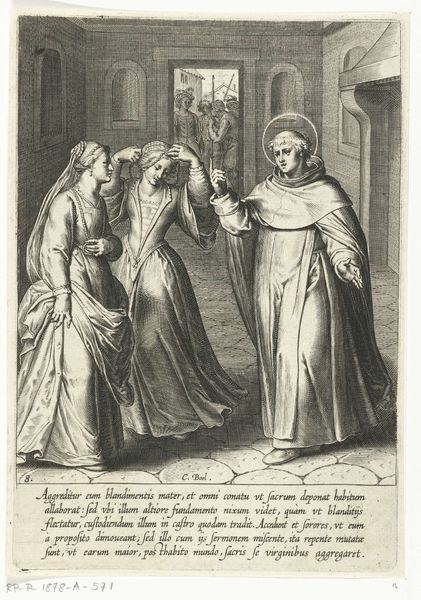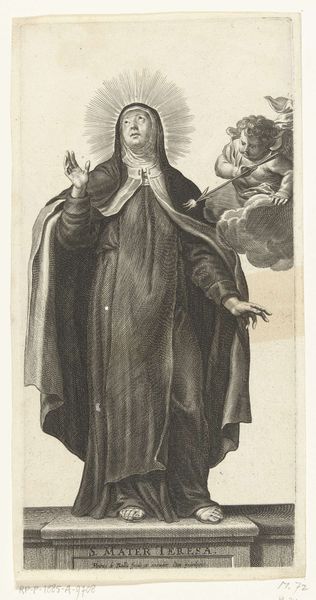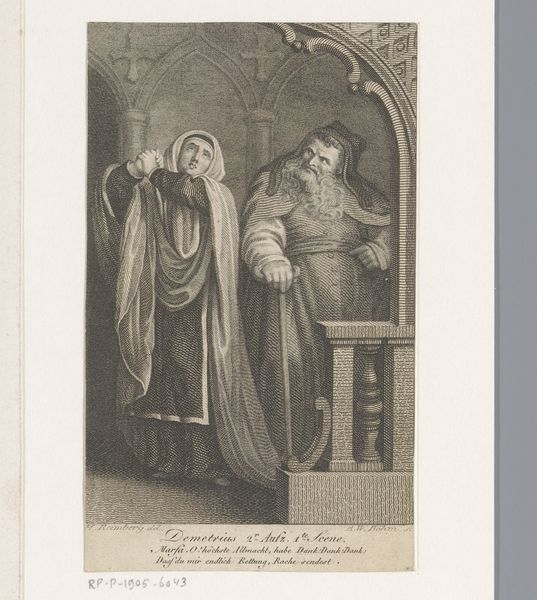
Fille Armenienne, que l'on conduit à l'Eglise pour la marier, plate 87 from "Recueil de cent estampes représentent differentes nations du Levant" 1714 - 1715
0:00
0:00
drawing, print, engraving
#
portrait
#
drawing
# print
#
figuration
#
islamic-art
#
genre-painting
#
history-painting
#
engraving
Dimensions: Sheet: 16 7/16 × 11 15/16 in. (41.7 × 30.4 cm) Plate: 14 1/8 × 9 3/4 in. (35.9 × 24.8 cm)
Copyright: Public Domain
Curator: Looking at this print, dating back to 1714-1715, we see "Fille Armenienne, que l'on conduit à l'Eglise pour la marier," or "Armenian Girl Being Led to Church for Marriage," by Jean Baptiste Vanmour. The work, an engraving, is part of a series depicting different nations of the Levant. What’s your immediate impression? Editor: Ethereal, almost ghostly. These figures, shrouded in fabric, have a profound sense of solemnity, but also of concealment, or mystery. It is difficult to interpret, especially when viewing it as a depiction of what should be a joyous occasion. Curator: I think that observation about concealment gets right to the heart of it. Vanmour’s prints, while seemingly ethnographic records, were inevitably shaped by the visual culture and societal biases of 18th-century Europe. It is useful to observe this as a product produced and consumed during that era. The elaborate veiling practices shown here become an important focal point that raises questions about gender, identity, and representation. Editor: Right. And what materials are they wearing, do you suppose? The textures look so finely rendered for an engraving. You can almost feel the weight of the garments and those delicate, almost translucent veils. It brings out, for me, a somber kind of beauty, where you consider the artistic work necessary in creating this sort of scene that documents something so particular from Armenian culture. It feels both sensitive and… voyeuristic somehow. Curator: Exactly. Vanmour worked from life, but always mediated through a European lens. Considering this print, for example, it is number 87 in a series. Therefore, we must consider how he selected the subjects he captured to best suit the tastes and expectations of the French court or other European audiences. Were these “exotic” portrayals, for example, also a commentary on his own society? It certainly raises interesting questions about labor, trade and intercultural relations, which may explain why there is little historical trace about the woman herself and her particular circumstances of marrying, if even the case. Editor: Food for thought. In its depiction of this young woman, almost obscured but on the precipice of a life change, what strikes me the most is a profound quietude and its somewhat strange emotional pull. This really allows for further exploration into themes of cultural exchange. Curator: Indeed. This single print offers us many layers to unpack, challenging us to think critically about cross-cultural representation.
Comments
No comments
Be the first to comment and join the conversation on the ultimate creative platform.
